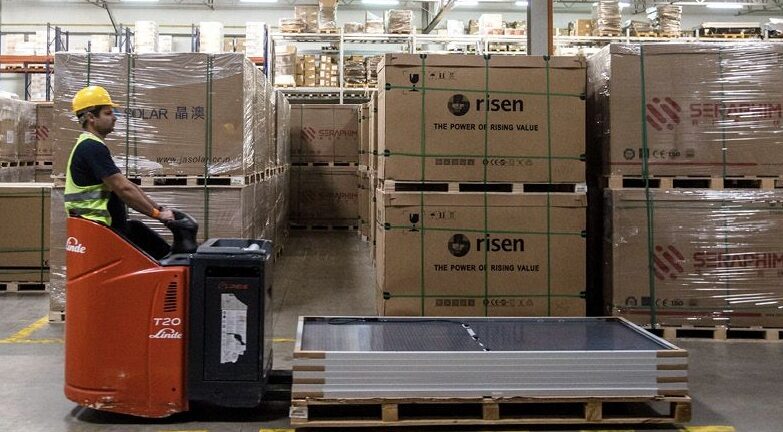From pv magazine France
Pending France's new multi-year energy plan (PPE) and the new government composition, the Directorate General for Energy and Climate (DGEC) and the Directorate General for Enterprises (DGE) have announced two new calls for tenders for photovoltaic installations by the end of summer 2024. A total of 1.225 GW of solar energy will be offered in two auctions.
In detail, the tender periods for solar energy are planned: between August 19 and 30 for ground-mounted PV, for a total capacity of 925 MW; and between August 26 and September 6 for building-mounted PV, for a total capacity of 300 MW
Solar installations on sheep and cattle farms will be able to apply for the ground-mounted call for tenders. Depending on their height, other agrivoltaic projects will be able to subscribe to the call for tenders on the ground or buildings.
“Candidates must undertake to guarantee the preservation of significant agricultural activity below the panels, in line with the objectives set out by the law for the acceleration of the production of renewable energies,” the DGE stated.
Change of the carbon criterion
To promote European-made panels, the building call for tenders will include new criteria with regard to the carbon footprint of solar modules. The well-known “French particularity” on this point is changing with the abandonment of the life cycle analysis (LCA) method in favor of a “mix-country” approach. Concretely, each country will be assigned a carbon score that will be applied for each module, cell, or wafer imported from that country. “This modification could, if successful, be generalized to all photovoltaic mounting systems,” the DGE specified in a press release.
According to the agency, this new methodology aims to limit the possibilities of fraud and circumvention of carbon footprint requirements. For market observers, it is also a way of directly promoting future French and European solar panel production projects with favorable ratings, despite a carbon footprint that is sometimes little better or equal to current Chinese producers.
The LCA method enabled Chinese manufacturers to make efforts in their production lines and to support, on a global scale, a more environmentally-friendly solar value chain, according to observers. This methodology allowed production units to be rated according to their actual carbon footprint, and thus enhanced the value of manufacturers' initiatives such as changing suppliers or developing on-site self-consumption PV systems to avoid the burden of China's carbon-intensive energy mix, among others.
This content is protected by copyright and may not be reused. If you want to cooperate with us and would like to reuse some of our content, please contact: editors@pv-magazine.com.




By submitting this form you agree to pv magazine using your data for the purposes of publishing your comment.
Your personal data will only be disclosed or otherwise transmitted to third parties for the purposes of spam filtering or if this is necessary for technical maintenance of the website. Any other transfer to third parties will not take place unless this is justified on the basis of applicable data protection regulations or if pv magazine is legally obliged to do so.
You may revoke this consent at any time with effect for the future, in which case your personal data will be deleted immediately. Otherwise, your data will be deleted if pv magazine has processed your request or the purpose of data storage is fulfilled.
Further information on data privacy can be found in our Data Protection Policy.